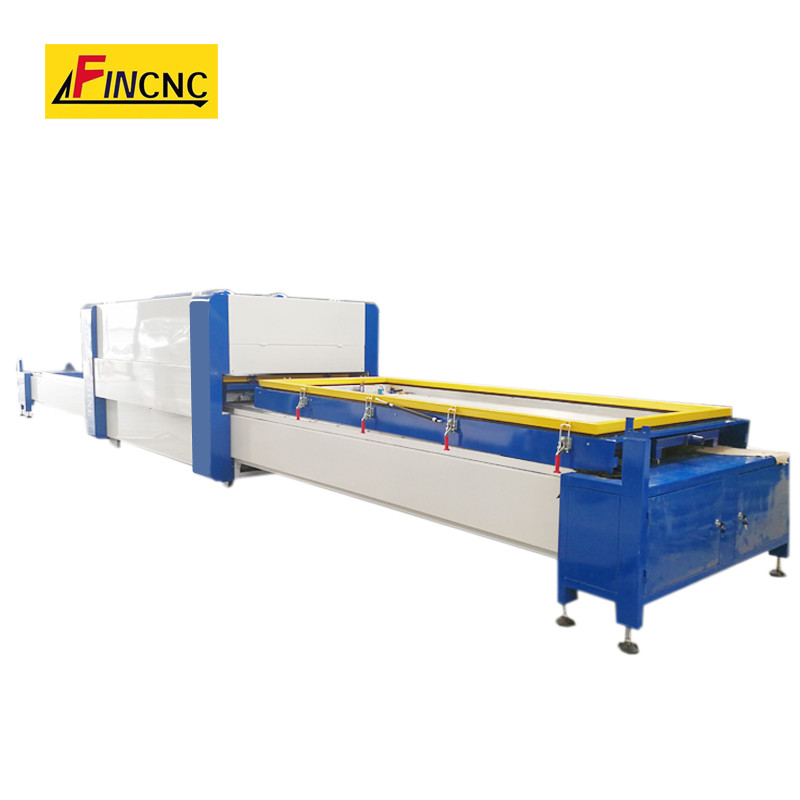Mastering Precision: The Vacuum Membrane Press Process in WPC Door Manufacturing
2024-03-14
In the realm of modern manufacturing, innovation continues to drive efficiency, precision, and quality. One technology that has revolutionized the production of WPC (Wood Plastic Composite) doors is the vacuum membrane press process. This sophisticated technique offers unparalleled control and flexibility, ensuring flawless results in WPC door manufacturing. Let's delve into the intricacies of the vacuum membrane press process and its application in creating high-quality WPC doors.
Understanding the Vacuum Membrane Press Process
The vacuum membrane press process is a specialized method used to laminate decorative materials onto the surface of substrates, such as WPC panels or doors. The process involves the following key steps:
1. Preparation of Substrate:
The WPC door substrate is prepared by cutting it to the desired size and shape. Any imperfections or rough edges are smoothed out to ensure a uniform surface.
2. Application of Adhesive:
A suitable adhesive is applied to the surface of the WPC door substrate. This adhesive serves as the bonding agent between the substrate and the decorative material.
3. Placement of Decorative Material:
The decorative material, which could be PVC film, PET foil, veneer, or decorative paper, is carefully placed over the adhesive-coated surface of the WPC door substrate. This material may feature various designs, patterns, textures, or finishes to achieve the desired aesthetic.
4. Vacuum Pressing:
The WPC door substrate, along with the decorative material, is placed inside the vacuum membrane press machine. The machine then creates a vacuum environment, causing the membrane to conform tightly around the substrate and decorative material.
5. Application of Heat and Pressure:
Heat and pressure are applied to the vacuum-sealed assembly within the press machine. This activates the adhesive, causing it to bond the decorative material securely to the surface of the WPC door substrate.
6. Cooling and Release:
After the pressing cycle is complete, the vacuum is released, and the assembly is allowed to cool. Once cooled, the vacuum membrane is removed, revealing the finished WPC door with the decorative material laminated onto its surface.
Application to WPC Door Manufacturing
The vacuum membrane press process offers numerous advantages in WPC door manufacturing:
1. Enhanced Aesthetics:
By laminating decorative materials onto the surface of WPC doors, manufacturers can achieve a wide range of aesthetic effects, including wood grain textures, vibrant colors, and intricate patterns. This allows for greater design flexibility and customization to meet customer preferences.
2. Improved Durability:
The lamination process not only enhances the appearance of WPC doors but also improves their durability and resistance to wear, scratches, and moisture. The protective layer provided by the decorative material adds an extra level of protection, extending the lifespan of the doors.
3. Consistent Quality:
The vacuum membrane press process ensures consistent and uniform lamination across the entire surface of WPC doors. This results in a high-quality finish with minimal imperfections, enhancing the overall appearance and perceived value of the doors.
4. Efficiency and Productivity:
Vacuum membrane press machines offer efficient and automated operation, allowing for rapid production of WPC doors with minimal labor and material waste. This increases productivity and reduces manufacturing costs, making the process economically viable for large-scale production.
5. Environmental Benefits:
The vacuum membrane press process is relatively environmentally friendly compared to traditional methods such as solvent-based adhesives or veneer gluing. It produces minimal emissions, consumes less energy, and generates less waste, contributing to sustainability efforts in manufacturing.
In conclusion, the vacuum membrane press process plays a pivotal role in modern WPC door manufacturing, offering precise control, versatility, and efficiency. By laminating decorative materials onto WPC door substrates, manufacturers can achieve stunning aesthetics, improved durability, consistent quality, enhanced productivity, and environmental sustainability. As demand for high-quality WPC doors continues to rise, the vacuum membrane press process remains a cornerstone of excellence in the industry.



